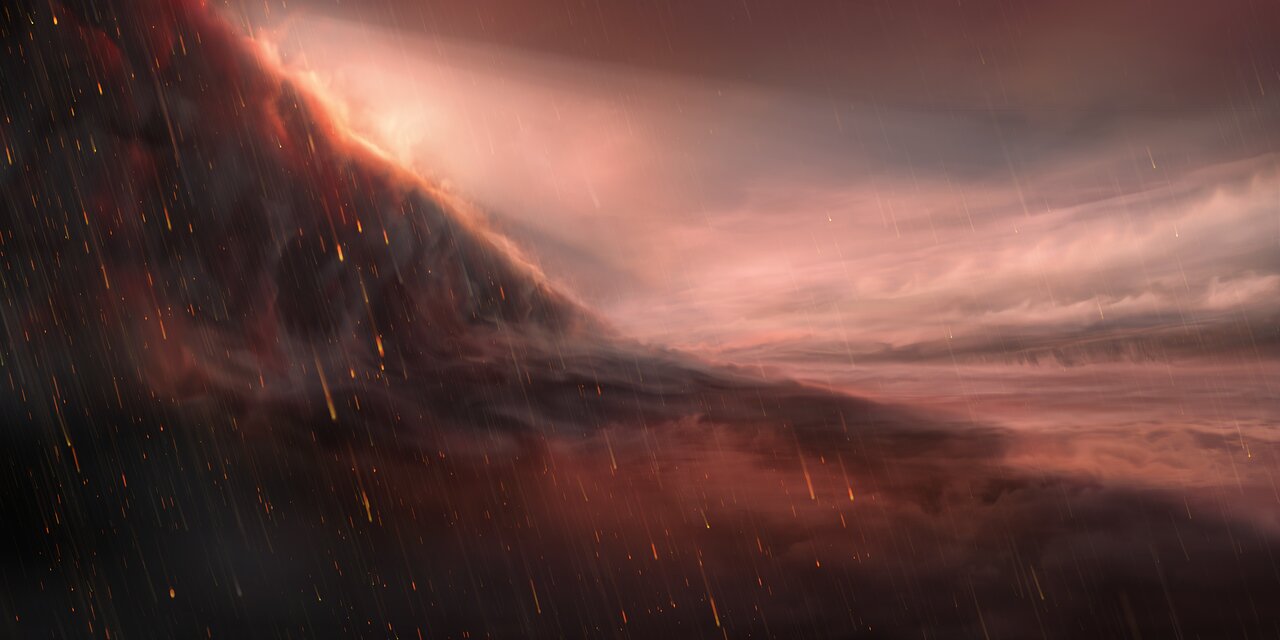Exoplanets – that is, planets outside our solar system – are often famous for their fringes, impressing even the most experienced astronomers with what the universe hides almost unimaginable to the human mind. Recently, one of these planets was discovered: The sunny side of WASP-76b roughly the size of Jupiter is so hot that iron evaporates and rain falls again in the cooler night half of the celestial body, according to a Science Alert article.
WASP-76b has been studied by experts before, when it was concluded that the temperature on the day side of the planet could be around 2246 degrees Celsius. They have now reviewed previous results and concluded that the heat is even higher, the best evidence for this being ionized calcium observed in the orb’s atmosphere, which can only form at extremely high temperatures.
The spectral signal of ionized calcium indicates that very strong winds are blowing in the upper atmosphere of an exoplanet, or that the atmospheric temperature is much higher than previously thought.” – It is to explain Emily Diebert of the University of Toronto, Canada.
WASP-76b was originally discovered in 2016. A hot Jupiter-type planet, which means the giant planet is very close to its star, orbiting in just 1.8 Earth days. It is “only” 640 light-years from Earth.
Researchers used the Gemini North Telescope in Hawaii to study the planet. In the first place, they note the boundary between the day and night side, the “temperate belt” of the planet.
It’s really impressive how much we can find out about the atmospheres of planets that are often hundreds of light-years away using current telescopes and instrumentation.” Said atomic astronomer Ray Jayawardhana, a researcher at Cornell University. He added that spectroscopy techniques can provide information about, among other things, the components of an aliens’ atmosphere, their physical properties, potential clouds, and even wind patterns.
The current research was performed under the ExoGemS program. The project will study at least 30 exoplanets and, at the end of several years of research, we hope to have a more accurate picture of atmospheric diversity in alien worlds.
consequences Astrophysical Journal Letters Published in the last issue.












































